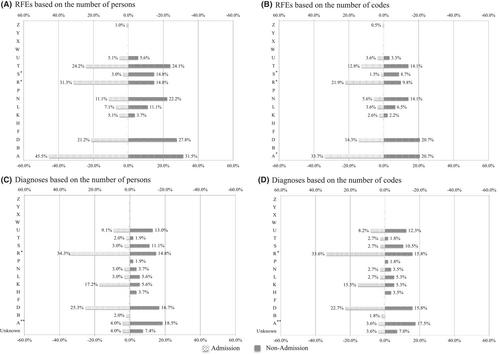Reasons for encounters, diagnoses, and admission rate among emergency referrals at an urban primary care clinic in Japan: A retrospective cohort study
Abstract
Background
Comprehensive understanding of emergency referrals (EmR), encompassing reasons for encounters (RFEs) and diagnoses, is crucial for primary care physicians (PCPs). Comparing EmR rates and subsequent admission rates can potentially enhance the quality of primary care for EmR practice. However, no study has evaluated RFEs among patients with EmRs. This study aimed to identify RFE/diagnosis in relation to subsequent admission among patients receiving EmR.
Methods
We conducted a retrospective cohort study at an urban family physician teaching clinic in Kawasaki City, Japan. Our cohort recruited consecutive EmR episodes with their medical records and admissions confirmed through response letters from receiving hospitals. Using the 2nd edition of the International Classification of Primary Care, we explored the frequency of RFEs and diagnoses, calculating EmR rates and admission rates as primary outcomes. Bivariate analyses were employed to compare admission and non-admission cases.
Results
The present study encompassed 162 EmR episodes out of 47,901 visits, yielding an EmR rate of 3.38/1000 visits. Among 153 completely followed episodes, 99 patients were emergently admitted, resulting in a 64.7% admission rate. The admission group exhibited significantly higher age and a greater prevalence of dementia. Descriptive analysis revealed fever and pneumonia as the most frequent RFE and diagnosis, respectively, with significant differences between admission and non-admission groups.
Conclusions
The present study reports EmR and admission rates following EmR, highlighting differences in patient characteristics, RFEs, and diagnoses. The findings offer insights to enhance PCPs' EmR practices and serve as a benchmark for the scope of EmR practice.


 求助内容:
求助内容: 应助结果提醒方式:
应助结果提醒方式:


